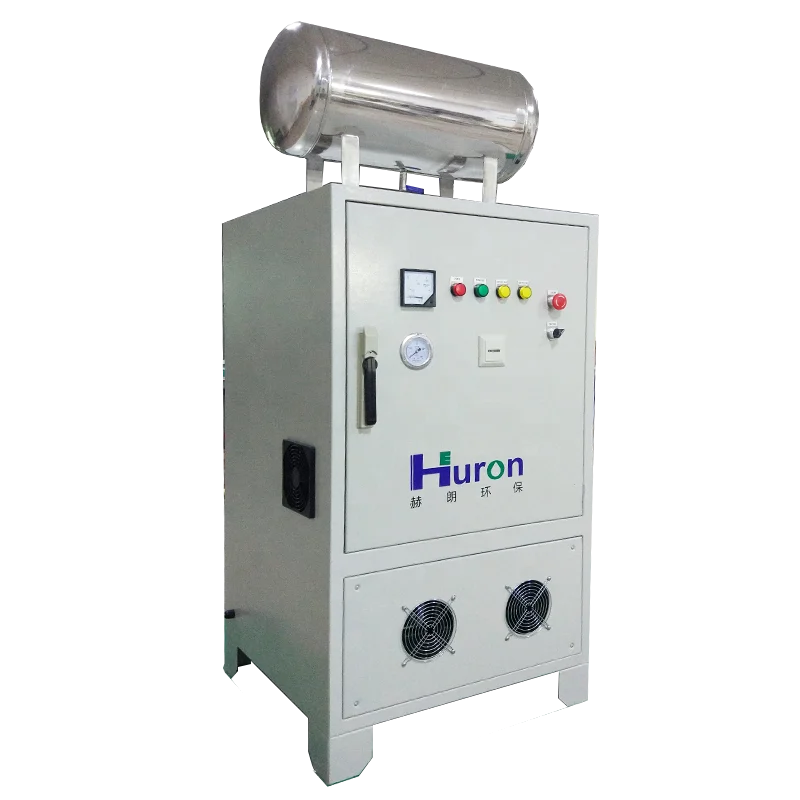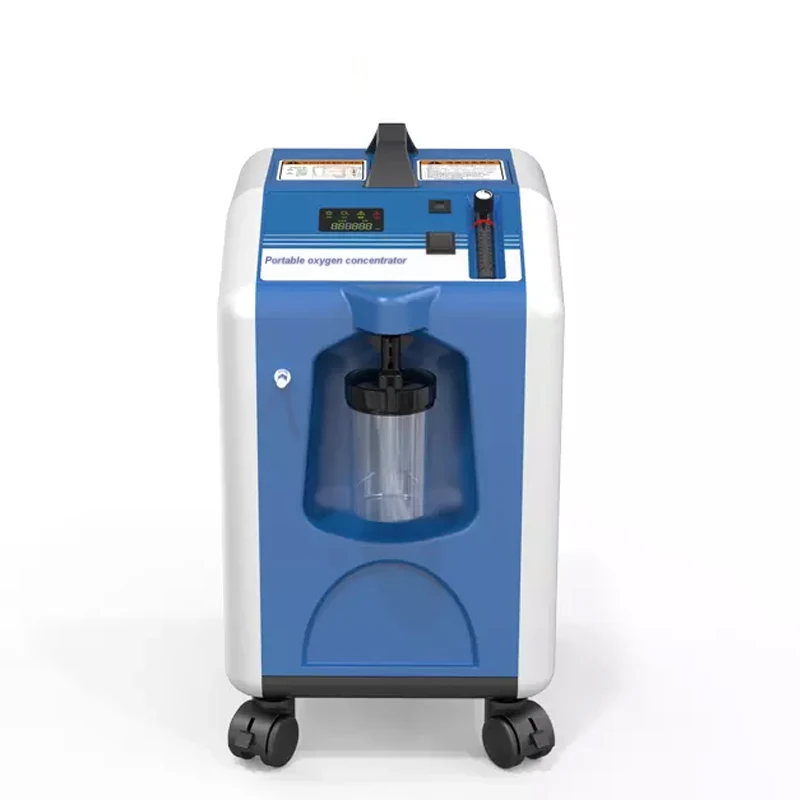RAS are used in home aquaria and for fish production where water exchange is limited and the use of biofiltration is required to reduce ammonia toxicity. Other types of filtration and environmental control are often also necessary to maintain clean water and provide a suitable habitat for fish. The main benefit of RAS is the ability to reduce the need for fresh, clean water while still maintaining a healthy environment for fish. RAS have high fish stocking densities and can be operated economically commercial.All our eWater researchers are currently conducting studies in RAS and we have many successful indoor fish farming projects all over the world.

Overview
Inquiry
Related Products
Brand: eWater
Releasing the eWater Industrial Ozone Generator Machine, a product this is certainly vital any aquaculture system. This system this is truly powerful the standard disinfectant properties of ozone to cleanse water in aquaculture systems when it comes to health this is certainly safety that is ongoing of pets.
The eWater Industrial Ozone Generator device is made to be tough and durable, crafted from top-quality materials that may withstand the harsh conditions of an aquaculture environment. The apparatus is simple to include and run, causing this to be a solution this is certainly really perfect both hobbyist and expert operations.
The system was designed to expel bacteria which are harmful viruses, and also other microorganisms which will harm pets that potentially are going to be aquatic. The ozone generator creates high degrees of ozone, which quickly kills down these microorganisms that are harmful making any residues that are hazardous.
The eWater Industrial Ozone Generator device could enhance water quality also by eliminating odors which are unpleasant colors through water alongside its sterilization capabilities. Meaning not only can your animals being healthier this is certainly aquatic but along with the water can look and smell better.
These devices are very efficient and economical, utilizing energy that is minimal still achieving optimum outcomes. This is really very long the eWater Industrial Ozone Generator device is an investment that is smart the long-term medical health insurance and rise in popularity of the aquaculture operation alongside a lifespan.
Recirculating aquaculture system
Main eWater RAS processes and the equipment necessary
Process |
Equipment necessary |
Biolfiltration |
denitrifying biofilter,MBBR process |
Solids removal |
drum filter, sand filter, protein skimmer |
Reoxgenating |
oxygen cone or low pressure oxygenating device |
PH control |
degassing device |
Temperature control |
submerged heaters, heat pumps, chillers, and heat exchangers |
Biosecurity |
UV sterilizer ,ozone generator |






Parameters
Model |
Capacity
(gram/hour)
|
Power
(W)
|
Size
(cm)
|
Sheet Material |
Oxygen Generator
|
EOZ-10 |
10 |
680 |
55X40X73 |
SS304 |
NA |
EOZ-15 |
15 |
780 |
55X40X85 |
SS304 |
NA |
EOZ-O-20 |
20 |
850 |
55X40X85 |
Carbon steel |
Available |
EOZ-O-30 |
30 |
950 |
55X40X85 |
Carbon steel |
Available |
EOZ-O-40 |
40 |
1100 |
55X40X124 |
Carbon steel |
Available |
EOZ-O-50 |
50 |
1200 |
55X40X124 |
Carbon steel |
Available |
EOZ-O-60 |
60 |
1300 |
55X40X124 |
Carbon steel |
Available |
EOZ-O-80 |
80 |
1750 |
55X40X133 |
Carbon steel |
Available |
EOZ-O-100 |
100 |
1800 |
60X50X143 |
Carbon steel |
Available |
Applications
The RAS is a high density indoor aquaculture system and the fish species of eWater RAS successful applications including the Mandarin fish, Spotted bass, Turbot Fish, Lobster,Vannamei, King grouper,Tilapia and so on.

Successful Cases

Bagda(Tiger Shrimp)
● Culturing Cycle Time: 90D to 55 - 65 grams size for harvesting
● Biomass: 10 kilograms/m3 at harvesting
● Temp:20 – 30 ℃, 26 – 30 ℃ preferred

Shing (Stinging Catfish)
Heteropneustes Fossilis
● Culturing Cycle Time: 140 -160D to 65 - 80 grams size for harvesting
● Biomass: 80 kilograms/m3 at harvesting
● Temp: 20 – 30℃, 23 – 28℃ preferred

RAS used to grow Pabda in Bangladesh
Farming cycle time: 120 days (fingerlings to 80 grams for
harvesting)
Biomass ( stock density): 80 kg /m ³
RAS water volume: 285 m³
RAS water flow: 240 m³/hour

RAS used to grow Tilapia in Jordan
Three tanks for grow-out and one tank for harvesting
Water volume: 1182 m³
12 small tanks for fingerlings nursery, each tank 36m³
Biomass(stock density) at harvesting : 100 kg /m³
RAS water flow: 1000 m³ /hour
Company profile
Zhongshan eWater Aquaculture Equipment Technology Limited is a professional company engaged in design,production and sales of Recirculating Aquaculture System as well as aquaculture equipment. Ewater is focused on the development and manufacturing of industrial recirculating aquaculture system solutions, and its product design and production, including drum filters, protein skimmers, biological filters, aeration equipment, disinfection equipment, heat pumps and water quality monitor equipment.

We work with top-level aquaculture research institutes and experts to develop best solutions for our customers in aquacultrure industry. Our engineering team is committed to develop best practices for each equipment and RAS based on customers' needs. We continue to be reliable and honest in what we do and how we act.
Our mission is to improve sustainability and profitability for customers,and be a valuable partner for customers' long-term business.

● Consulting service available and custom designs are welcome!
● We offer practical solutions, premium quality products along side competitive prices and prompt delivery.
● All the equipment are guaranteed for 2 years and life-time warranty except for the wearing parts.
● Support onsite installation and sending engineer for debugging on demands.
● After-sales service and content: If the quality problems occur; even the equipment lose the ability of working, we will repair or replace them free of charge during the warranty period. The product is life-long maintenance and we will
provide all-round services except for factors such as artificial damage or irresistible force.

 EN
EN
 AR
AR
 BG
BG
 HR
HR
 CS
CS
 DA
DA
 NL
NL
 FI
FI
 FR
FR
 DE
DE
 EL
EL
 HI
HI
 IT
IT
 JA
JA
 KO
KO
 NO
NO
 PL
PL
 PT
PT
 RO
RO
 RU
RU
 ES
ES
 SV
SV
 TL
TL
 IW
IW
 ID
ID
 SR
SR
 UK
UK
 VI
VI
 HU
HU
 TH
TH
 TR
TR
 AF
AF
 BN
BN
 LO
LO
 LA
LA
 MY
MY
 UZ
UZ






















